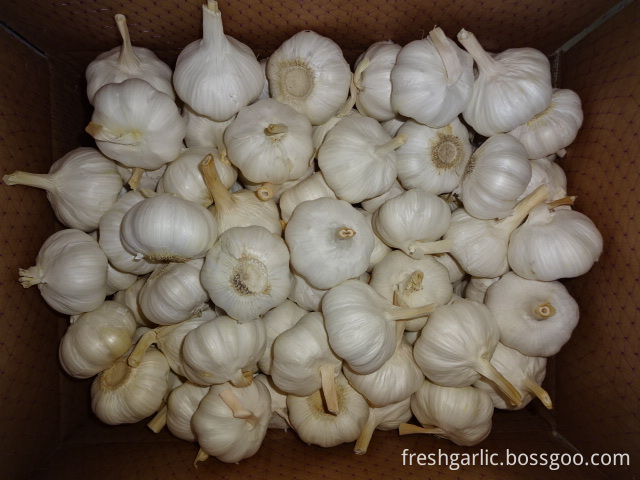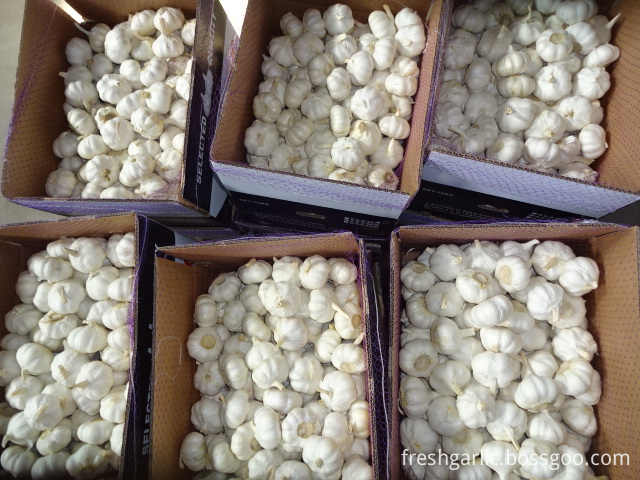Effects of Fat Nutrition on Performance of Weaned Piglets
After early weaning, the dietary structure of the piglets changed dramatically. Calculated on a per kg dry matter basis, the digestive energy content decreased from 22.18 MJ for breast milk to 13.8-14.2 MJ for a grain-soybean meal diet. Lower dietary digestive energy concentrations, decreased appetite due to weaning stress, and reduced feed intake; neonatal piglets have low glycogen storage and insufficient gluconeogenesis to provide sufficient energy, and body fat reserves for neonatal piglets are only body weight 1%-2% of them have poor metabolic function, low fatty acid oxidation rate, and body fat can not provide sufficient energy. All of these factors lead to insufficient energy intake of piglets and have become an important factor restricting the normal growth and development of piglets. For this reason, dietitians add fat to the weaned pig diet to solve the problem of energy shortage. However, the relevant studies over the years have not reached a consistent conclusion. This article summarizes the issues and the factors that influence the digestive use of fat in piglets as follows.
l Effect of Dietary Fat on Performance of Weaned Piglets
In recent years, many experiments at home and abroad have shown that the addition of fat in the diet of weaned piglets can improve its performance. Dove (1993) added 5% fat to 540 heads of 25-day-old weaned piglets, and the daily weight gain of the test group increased significantly (P<0.01). Verland et al. (1995) added 6% of animal fat to the diet of weaned piglets. The daily weight gain increased by Z1.4% (P<0.01) within 5 weeks after weaning, and the feed conversion rate was significantly improved. Dela et al. (2001) showed that dietary fat supplementation significantly improved the daily gain of 36-59 kg of pigs, and pigs larger than 59 kg had no significant effect. Domestic Wang Youming et al. (1999) used 270 heads of weaned piglets for 5 treatments (control group, 3.5% palm oil, 2.8% feed grade oil, 3.1% fish oil, 2.7% soybean oil). In the 45-day trial, the soybean oil group, the mixed oil group, the brown oil group, and the fish oil group were increased by 2.72, 9.39 (P<0.05), 1.90, and -9.02 (P<0.05), respectively, compared with the control group. The oil group was 10.5%, 7.11%, 9.21%, and 2.63% higher than the brown oil group, fish oil group, soybean oil group, and control group, respectively. Zhang Heliang. Pin Yu et al. (1999) used a 96-day-old 35-day-old weaned piglet for a four-week trial with 0, 1.8%, 3.4%, and 5.2% of soybean oil instead of the equivalent amount of corn. The results showed that the addition of oils and fats to the diets for 1-2 weeks after weaning did not affect piglet production performance, which is consistent with many experimental findings (Cera et al., 1988; Tokach et al., 1989; Dove et al., 1993; Li Defa et al., 1990). However, 3-4 weeks after weaning, the daily weight gain, feed intake, and daily intake of digestive energy in the 3.4% soybean oil treatment group were significantly higher than those in the other three treatment groups (P<0.05). This indicated that piglets were able to use a certain amount of fat during this period. Cera et al. (1988), Li et al. (1990), and Dove et al. (1992) proved this conclusion. This weight gain effect, in addition to the energy nutrition of fat itself, some scholars believe that there is an "extra metabolic effect", that fat can delay the flow of food in the gastrointestinal tract, increase the digestion and absorption time of nutrients, thereby increasing the absorption usage efficiency. The decrease in the production performance caused by excessively high proportion of fat is considered to be due to the fact that the fatty acid oxidation capacity of weaned piglets is limited and excess fat is stored in adipose tissue, leading to slow growth of muscle tissue (Zhang Heliang, 1999). In addition, trials by some scholars (Jones et al., 1992; Verland, 1993; Tokach et al., 1995; Brown et al., 1998; Shi Zhaoshan et al., 1997) found that dietary fat supplementation in weaned piglets did not improve piglet performance. For this different conclusion, the author believes that the effect of fat digestion and absorption, in addition to the effects of changes in digestive physiology and fat digestive enzymes of weaned piglets, is also affected by, for example, the type of oil used for the test, the diet structure, and various other factors. Impact.
2 Relationship between morphology, lipase changes and fat absorption in small intestine of piglets after weaning
2.1 Changes of intestinal structure after weaning
The maintenance of normal structure and function of the small intestine is a basic guarantee for the full digestion and absorption of various nutrients including fat. However, after weaning, the piglets exhibited severe abscission of the villus in the small intestine, increased intestinal mucosal lymphocyte proliferation and mitotic mitosis (Hoppcll et al., 1982; Millsr et al., 1984). Hampson et al. (1986) pointed out that the small intestine injury of weaned piglets has obvious site and age characteristics. Pekas (1990) believes that the digestive tract of piglets must develop after 6-8 weeks of age. Therefore, after early weaning of piglets, the volume and quality of the digestive tract and digestive glands are not mature except for the intestinal damage caused by changes in the structure of the diet. This greatly limits the digestion and absorption of nutrients such as fats. . The effect of fat on the villus of the small intestine varies with the type of fat and the amount of fat added. Li Defa et al. (1990) reported that adding large amounts of fat to the diet will reduce the villus height of the small intestine and decrease the utilization rate of fat. When soybean oil and coconut oil are mixed in a 1:1 ratio in the diet, there is no effect on the morphology of the intestinal villi. When used alone, the intestinal villi of piglets become shorter.
2.2 Changes of lipase after weaning
Before the piglets were born, they did not eat colostrum, and the total lipase activity was very low. After eating the colostrum, the activity increased rapidly. Stable after one week of age. During the lactation period, the piglet lipase secretion was insufficient, but the digestibility of the fat was very high. The digestive enzyme activity of the weaned piglet at 4 weeks old was reduced to about 1/3 of that before weaning within one week. After 2 weeks, in addition to the activity of pancreatic lipase still not significantly restored, other enzyme activities have been restored, even beyond pre-weaning levels (Lindemann et al., 1986). Cera et al. (1998) found that the activity of lipase in the intestine of pigs at 0-5 weeks of age was doubled almost weekly, but after 3-5 weeks of age weaning, its activity did not increase and recovered after 1 to 2 weeks. . Domestic studies by Zhang Zhenbin et al. (1999) on the change of lipase activity after weaning of 14-day-old piglets showed that the activity of pancreatic lipase decreased after weaning, while the change of lipase activity in jejunum content was relatively stable. It began to increase on the 6th day, and it increased by 44 on the 9th day before weaning, while it increased by 20 times on the 9th day in the nursing group. These experimental results all theoretically support the conclusion that piglets have no effect on dietary fat supplementation for 1-2 weeks after weaning, and that 3-4 weeks can improve the performance of piglets.
Pure White Garlic,also called snow White Garlic .There is no purple strips on the skin.The price of pure white garlic is more higher than Normal White Garlic.Our company can supply fresh,high quality and cheap pure white garlic .
Pure white garlic, packed in 10kg/carton
1. Commodity name: Pure white garlic (snow white garlic)
2. Feature: strongly spicy, milk white flesh, naturally bright color, no burnt, no mouldy, no broken, no dirt skins, no mechanical damaged, 1-1.5cm stem length, roots cleaness.
3. Size: 4.5-5.0cm, 5.0-5.5cm, 5.5-6.0cm, 6.0-6.5cm, 6.5cm & up.
4. Packing:
1) Loose packing(inner string bag): a) 5kgs/carton, b) 10kgs/carton, c) 20kgs/carton; d) 5kgs/mesh bag, e) 10kgs/mesh bag, f) 20kgs/mesh bag
2) Prepacking:
a) 1kg*10bags/carton b) 500g*20bags/carton c) 250g*40bags/carton
d) 1kg*10bags/mesh bag e) 500g*20bags/mesh bag f) 250g*40bags/mesh bag
g) prepacked by 1pc/bag, 2pcs/bag, 3pcs/bag, 4pcs/bag, 5pcs/bag, 6pcs/bag, 7pcs/bag, 8pcs/bag, 9pcs/bag, 10pcs/ba, 12pcs/bag, then packed with 5 or 10kgs carton, 5 or 10kgs mesh bag outside.
h) Or packed according to clients` requirements.
5. Supply period: all the year round
a) Fresh Garlic: early June to end August
b) Cold storaged garlic: early September to the next middle May
6. Conveyance:
a) Cartons: 24-27.5MT/40`HR (If palletized: 24Mt/40`HR)
b) Bags: 26-30Mt/40`HR
7. Transporting and storing temperature: -3°C--+2°C
8. Shelf life: stored for up to 12 months in proper conditions




Pure White Garlic
Pure White Garlic,Fresh Pure White Garlic,Pure Garlic,Pure White Fresh Garlic
JINING FORICH FRUITS & VEGETABLES CO., LTD. , https://www.forichgarlic.com